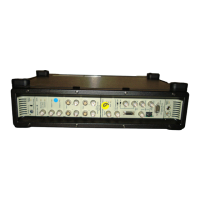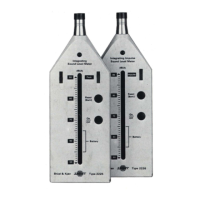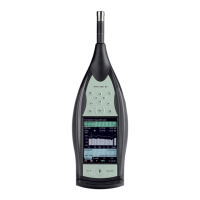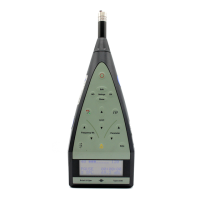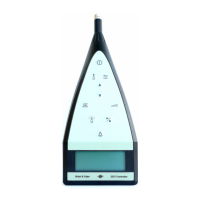CHAPTER 6
Controller and Input/Output Modules
81
6.10 6-ch. Input Modules Types 3039, 3039-B
This module comes in two versions: Type 3039
with LEMO and BNT/BNC connectors on the in-
put channels and Type 3039-B with a 37-pin D-sub
connector. For input of signals in seven ranges
from 7.071 mV to 7.071 V
peak
in 10 dB steps plus
12 V
peak
over the frequency range to 25.6 kHz.
6.10.1 Common Features
The modules can provide polarization voltage to all
channels simultaneously and support IEEE 1451.4
capable transducers with TEDS. Input may be
grounded or floating, controlled by PULSE software.
LEDs
Measuring: Indicates a measurement in progress
or the downloading of software to the module.
Input 1 to 6: For each channel, an LED indicates
the status of the channel (activated: green; over-
load: red). See section 7.8. On Type 3039, the LED
surrounds the connector.
6.10.2 Type 3039
Note: The LEMO and BNC connectors of each channel are connected in parallel. You
should therefore only connect one transducer to each pair of connectors at any one time.
Input 1: BNT connector (see Fig.7.3 on page 89) for direct connection of a voltage signal
or for connection of CCLD transducers and 7-pin LEMO connector (see Fig.7.6 on page 90)
for use with Brüel & Kjær microphones. The BNT connector also provides power for a tacho
probe.
Inputs 2 to 6: BNC connectors (see Fig.7.4 on page 89) for direct connection of a voltage
signal or for connection of a CCLD transducer, for example, DeltaTron
®
accelerometers or
microphone preamplifiers, and 7-pin LEMO connectors (see Fig.7.6 on page 90) for use
with Brüel & Kjær microphones.
6.10.3 Type 3039-B
37-pin D-sub connector for inputs 1 to 6. See Fig.7.9 on page 93.
The module can provide polarization voltage to all channels simultaneously and supports
IEEE 1451.4 capable transducers with TEDS. It provides a supply for CCLD transducers,
for example, DeltaTron
®
accelerometers, and for microphone preamplifiers.

